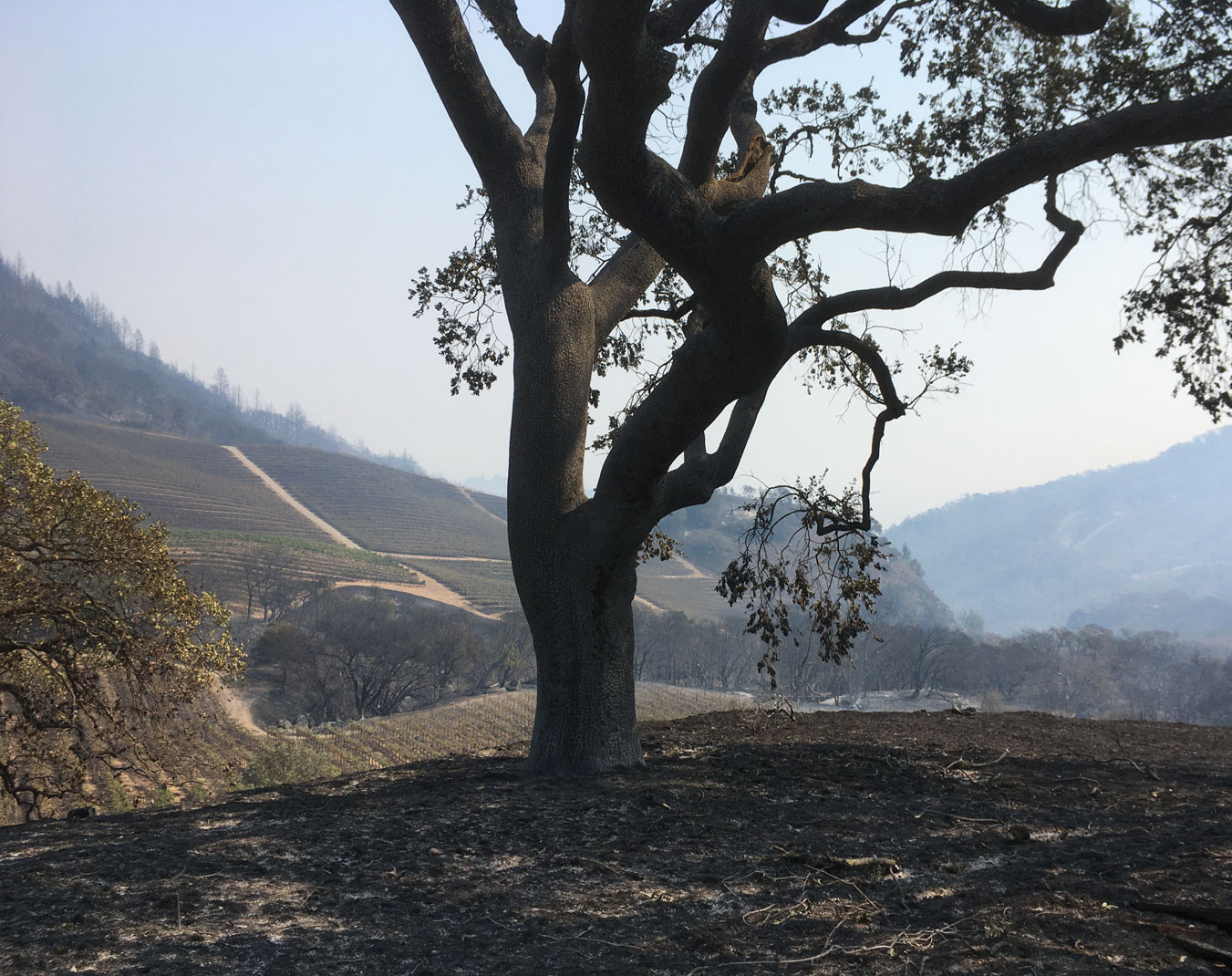
“If the vineyard has no particular personality, why bother? It’s a tough place to farm. There has to be a reason.”
—Chris Howell
“California Wine Country Rebuilds as Threats Persist,” The New York Times, July 2021:
The drought in Northern California is severe, and the risk of fires remains high. But winemakers are trying to adapt to climate change. ST. HELENA, Calif. — …Looking across a valley from Newton [Vineyard], I could see the scorched brown vineyard of Cain Vineyard and Winery, where the fires consumed the winery and the 2019 and ’20 vintages, along with the residence and car of Christopher Howell and Katie Lazar, a husband and wife who are Cain’s general managers. Just after the fires last year, I spoke with Mr. Howell, who told me the vineyard was largely intact. That turned out not to be the case. “I guess I was in denial,” Mr. Howell said in mid-July. “Everybody wanted the vines to survive. We wanted to say the tissue was still green. We didn’t want to believe any of it.” While he and Ms. Lazar have not quite come to acceptance, as at Newton, Mr. Howell said he’s no longer in denial, though maybe still bargaining, the midway point of Elisabeth Kübler-Ross’s five stages of grief. “Just replanting, that’s the priority, not rebuilding structures,” he said. “We have a business to run. We have people to support.” Both Cain and Newton have made arrangements to make and age wines elsewhere. Cornell already used facilities away from its vineyard. Mr. Howell estimated that the vineyard would take at least 10 years to replant, a daunting investment in an era of climate change. With the combination of drought and heat waves, fires will continue to threaten the region. Why risk future destruction? One answer might be in the wines themselves, like the 2008 Cain Five, so-called because it is a blend of the five classic Bordeaux varieties: cabernet sauvignon, cabernet franc, merlot, malbec and petit Verdot. The ’08 is a wine of great refinement, balanced and restrained yet expressing delicate aromas and flavors of purple fruits and flowers. Or the lovely, fragrant 2016 Cain Five, the current vintage on the market. “If the vineyard has no particular personality, why bother?” Mr. Howell said. “It’s a tough place to farm. There has to be a reason.”By Eric Asimov

